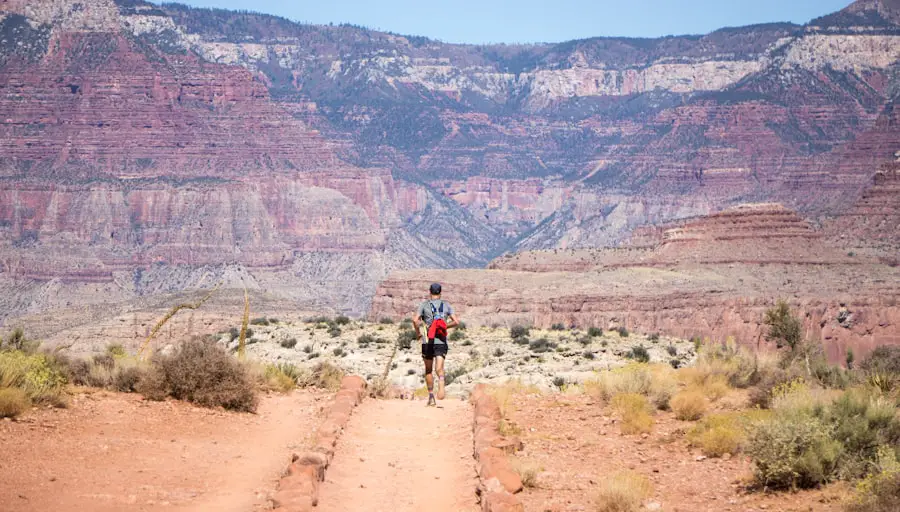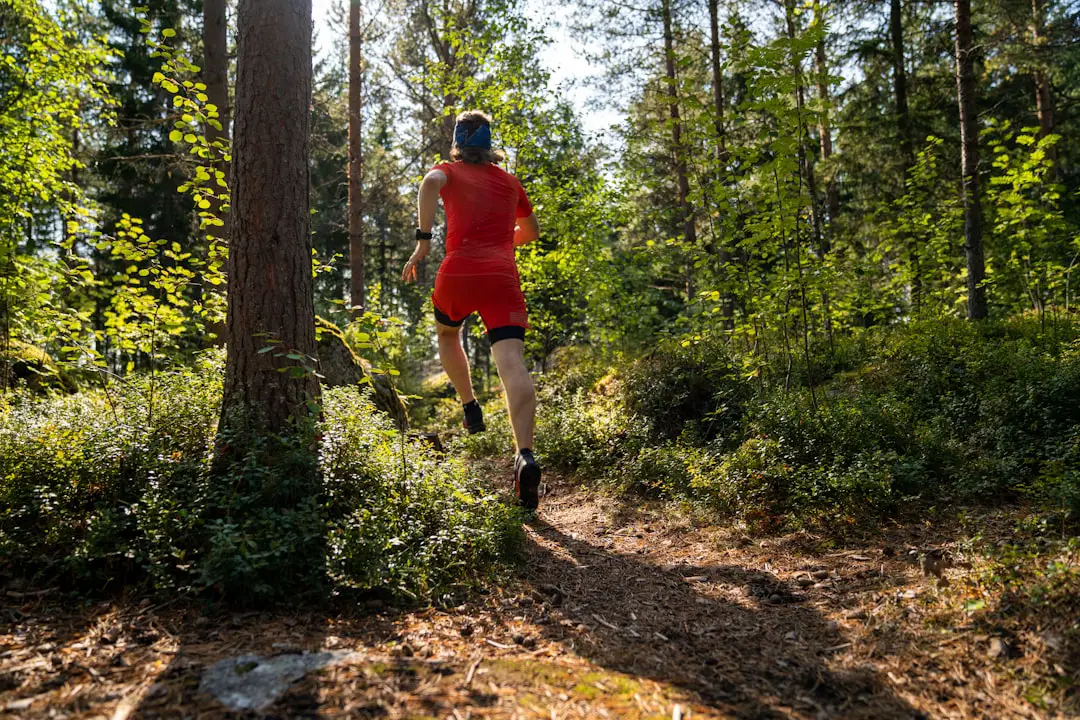Selecting the appropriate hiking shoe is a critical decision for anyone who enjoys exploring the great outdoors. The right footwear can significantly enhance your hiking experience, providing comfort, support, and protection against the various terrains you may encounter. Hiking often involves traversing rocky paths, muddy trails, and steep inclines, all of which can put immense strain on your feet and legs.
A well-chosen hiking shoe can help mitigate these challenges, reducing the risk of blisters, sprains, and other injuries that can arise from inadequate footwear. Moreover, the right hiking shoes can also improve your overall performance on the trail. They can provide the necessary traction to navigate slippery surfaces and uneven ground, allowing you to maintain your balance and stability.
This is particularly important when hiking in wet or rugged conditions where a misstep could lead to a fall. Additionally, a good pair of hiking shoes can enhance your endurance by reducing fatigue, enabling you to enjoy longer hikes without discomfort. Therefore, investing time in selecting the right hiking shoe is not just about comfort; it’s about ensuring safety and enhancing your overall hiking experience.
Key Takeaways
- Choosing the right hiking shoe is crucial for a comfortable and safe hiking experience.
- Key features to look for in a hiking shoe include proper fit, ankle support, traction, and waterproofing.
- Top trail comfort hiking shoe options include brands like Merrell, Salomon, and Keen.
- When comparing different hiking shoe brands, consider factors such as durability, breathability, and weight.
- Tips for properly fitting hiking shoes include trying them on in the afternoon, wearing the right socks, and testing for proper toe room.
Key Features to Look for in a Hiking Shoe
When searching for the ideal hiking shoe, several key features should be considered to ensure that you make an informed choice. First and foremost, the fit is paramount. A well-fitting shoe should feel snug but not overly tight, with enough room in the toe box to allow for natural movement.
This is essential because your feet tend to swell during long hikes, and a shoe that fits perfectly at the start may become uncomfortable as the day progresses. Additionally, consider the type of lacing system; a good lacing system allows for adjustments that can accommodate changes in foot volume throughout your hike. Another critical feature is the sole of the shoe.
The outsole should be made from durable rubber with a tread pattern designed for traction on various surfaces. Deep lugs can provide grip on loose or uneven terrain, while a stiffer midsole can offer support and stability. The cushioning of the shoe is also vital; adequate cushioning helps absorb shock and reduces impact on your joints during descents.
Furthermore, consider the shoe’s weight; lighter shoes can enhance agility but may sacrifice some durability and support. Ultimately, finding a balance between these features will help you select a shoe that meets your specific hiking needs.
Top Trail Comfort Hiking Shoe Options

There are numerous options available on the market when it comes to trail comfort hiking shoes, each designed to cater to different preferences and hiking styles. One popular choice among hikers is the Salomon X Ultra 3 GTX. This shoe is known for its exceptional grip and waterproof capabilities, making it ideal for wet conditions. The Contagrip outsole provides excellent traction on both wet and dry surfaces, while the Gore-Tex lining ensures that your feet stay dry even in rainy weather. Additionally, its lightweight design and cushioned midsole offer comfort during long hikes.
Another noteworthy option is the Merrell Moab 2 Ventilator. This shoe is celebrated for its breathability and comfort, making it suitable for warmer climates or summer hikes. The mesh upper allows for airflow, while the Vibram outsole provides reliable traction on various terrains.
The Moab 2 also features a cushioned footbed that enhances comfort over extended periods of wear. For those seeking a more minimalist approach, the Altra Lone Peak 5 offers a zero-drop platform that promotes a natural foot position while providing ample cushioning and traction for trail running or fast hiking.
Comparison of Different Hiking Shoe Brands
| Shoe Brand | Weight (per pair) | Waterproof | Traction | Price Range |
|---|---|---|---|---|
| Merrell | 2 lbs | Yes | Excellent | 100 – 150 |
| Columbia | 2.5 lbs | Yes | Good | 80 – 120 |
| Salomon | 1.8 lbs | Yes | Excellent | 120 – 180 |
| Keen | 2.2 lbs | Yes | Good | 90 – 130 |
When it comes to hiking shoes, several brands have established themselves as leaders in the industry, each offering unique features and technologies that cater to different types of hikers. Merrell is renowned for its commitment to comfort and durability, often incorporating advanced cushioning systems in their designs. Their shoes are particularly favored by casual hikers who prioritize comfort over technical features.
On the other hand, Salomon is known for its innovative designs and performance-oriented footwear. Their shoes often feature advanced materials such as Gore-Tex for waterproofing and Contagrip outsoles for superior traction. Salomon shoes are frequently chosen by more experienced hikers and those who tackle challenging terrains due to their focus on performance.
Another brand worth mentioning is Columbia, which offers a wide range of hiking shoes that balance affordability with quality. Columbia shoes often incorporate their proprietary technologies like Omni-Grip for enhanced traction and Techlite for lightweight cushioning. This makes them an excellent choice for budget-conscious hikers who still want reliable performance on the trails.
Tips for Properly Fitting Hiking Shoes
Achieving the perfect fit for your hiking shoes is essential to ensure comfort and prevent injuries during your outdoor adventures. When trying on shoes, it’s advisable to do so later in the day when your feet are slightly swollen from daily activities; this will give you a more accurate representation of how they will feel during a hike. Start by wearing the socks you intend to use while hiking; this will help you gauge how the shoe fits with your typical gear.
When assessing fit, pay attention to several key areas: the heel should feel secure without slipping, while there should be enough room in the toe box to wiggle your toes comfortably. A good rule of thumb is to have about a thumb’s width of space between your longest toe and the front of the shoe. Additionally, walk around in the shoes on different surfaces if possible; this will help you identify any pressure points or discomfort that may arise during actual use.
How to Break in Your New Hiking Shoes

Getting Started
Start by wearing your new shoes around the house or during short walks; this will help you get accustomed to their feel without putting too much strain on your feet.
Gradual Progression
Gradually increase the duration and intensity of your wear; consider taking them on shorter hikes or walks on varied terrain to simulate actual hiking conditions. Pay attention to any areas of discomfort or rubbing; if you notice any hotspots developing, it may be necessary to adjust how you lace them or consider using blister prevention products like moleskin or blister pads.
The Final Touches
Ideally, aim to break in your shoes over several weeks before tackling more challenging hikes.
Maintaining and Caring for Your Hiking Shoes
Proper maintenance of your hiking shoes can significantly extend their lifespan and ensure optimal performance on the trails. After each hike, it’s important to clean off any dirt or mud that may have accumulated on the shoes. Use a soft brush or cloth to remove debris from both the upper material and outsole; this prevents buildup that could affect traction over time.
Additionally, consider applying a waterproofing treatment periodically if your shoes are made from materials that can benefit from it, such as leather or synthetic fabrics with water-resistant coatings. This will help maintain their protective qualities against moisture and prolong their durability. Store your shoes in a cool, dry place away from direct sunlight when not in use; this helps prevent materials from breaking down due to heat exposure.
Finding Your Perfect Trail Comfort Hiking Shoe
Finding the perfect trail comfort hiking shoe involves careful consideration of various factors including fit, features, brand reputation, and maintenance practices. By understanding what makes a hiking shoe suitable for your needs and taking the time to properly fit and break them in, you can enhance your outdoor experiences significantly. Whether you opt for a lightweight trail runner or a sturdy boot designed for rugged terrain, investing in quality footwear will pay dividends in comfort and safety on your adventures in nature.
If you’re looking for the best hiking shoe for your outdoor adventures, you may also be interested in checking out this article on the best lightweight laptop for travel here.
FAQs
What are the key features to look for in a hiking shoe?
Some key features to look for in a hiking shoe include a durable and grippy outsole, a supportive midsole, a protective toe cap, a comfortable and breathable upper, and a secure lacing system.
What type of hiking shoe is best for different terrains?
For rugged and rocky terrains, a hiking shoe with a sturdy outsole and ankle support is recommended. For flat and easy terrains, a lightweight and flexible hiking shoe is suitable.
How should a hiking shoe fit?
A hiking shoe should fit snugly around the heel and midfoot, with enough room in the toe box to wiggle your toes. It’s important to try on hiking shoes with the socks you intend to wear while hiking.
What are the benefits of waterproof hiking shoes?
Waterproof hiking shoes can keep your feet dry and comfortable in wet conditions, such as hiking in rain or crossing streams. However, they may not be as breathable as non-waterproof options.
How often should hiking shoes be replaced?
Hiking shoes should be replaced every 500 miles or when the tread is worn down, the midsole is compressed, or the upper is damaged. It’s important to regularly inspect and maintain hiking shoes for optimal performance and safety.
